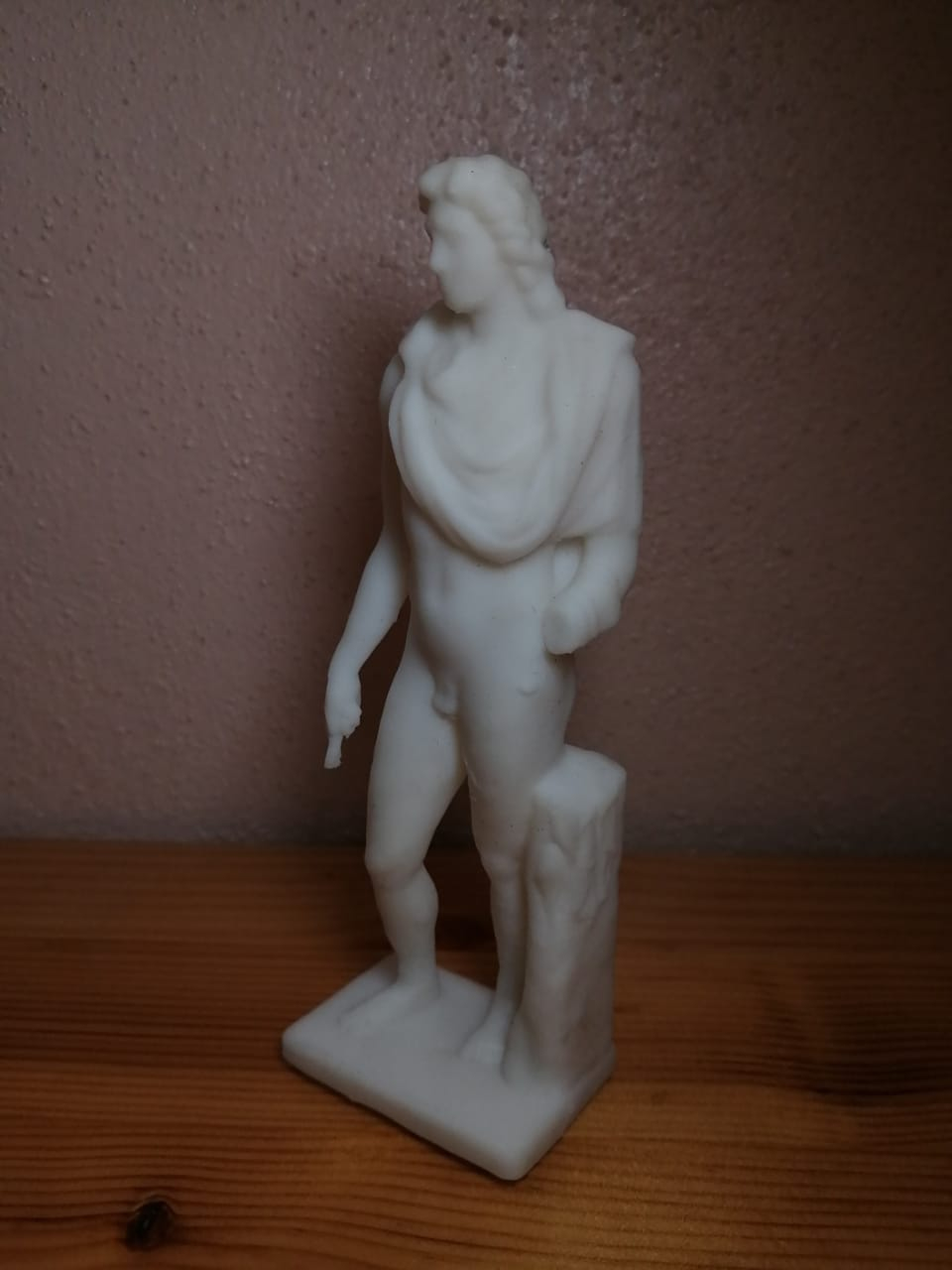

In 1903, the poem was cast onto a bronze plaque and mounted inside the pedestal's lower level.

American poet Emma Lazarus (1849–1887) wrote a sonnet named " The New Colossus" in 1883 to raise money for the construction of a pedestal for the Statue of Liberty.

The Statue of Liberty has been referred to as the “Modern Colossus” and is 34 meters tall. Both monuments were built as symbols of freedom. There is a relation between the Colossus and the Statue of Liberty in New York.Undoubtedly other funding had to be found as well, but it is not known in what proportion it was or who contributed it. In order to build the Colossus, the military equipment abandoned on the ground by Demetrios Poliorketes, after he was defeated, was sold. It is therefore well suited to manufacture statues to be exposed to the elements outside, and in particular to sea air laden with salt. Stronger than iron, it can resist extreme weather conditions. The choice of bronze, an alloy between copper and iron was chosen with care to build the Colossus. In the Hellenistic period (the 4th to 1st century BCE), Helios and the god Apollo would become practically synonymous. Here he was the most important deity, patron god, and honoured by the " Halieia festival", which were the highlight of the island’s religious calendar and Pan-Hellenic games much like the ancient Olympic Games. Helios was particularly worshiped in Rhodes. While it was not specifically the subject of a widespread cult across Greece, many people, including Socrates, would greet the Sun and offer prayers each day, as we are informed by Plato's Symposium and other works. Helios was the god of the Sun, offspring of the Titans Hyperion and Theia. Who was Helios, the Sun God? What was his relation to the Colossus? Today, the Colossus is regarded as one of the Seven Wonders of the World and a masterpiece of art and engineering. Although it disappeared from existence, the ancient World Wonder inspired modern artists such as French sculptor, Auguste Bartholdi, best known by his famous work, the 'Statue of Liberty' in New York. What was the appearance of the Colossus of Rhodes?Īlthough we do not know the true shape and appearance of the Colossus of Rhodes, modern reconstructions with the statue standing upright are more accurate than older drawings.

In any case, it never straddled the harbor entrance. Recent studies suggest that it was erected either on the eastern promontory of the Mandraki harbour, or even further inland. Moreover, the fallen Colossus would have blocked the harbor entrance. Given the height of the statue and the width of the harbour mouth, this picture is rather impossible than improbable. It has long been believed that the Colossus stood in front of the Mandraki harbour, one of many in the city of Rhodes, straddling its entrance. Let us clear a misconception about the appearance of the Colossus. It is said that the fragments had to be transported to Syria on the backs of 900 camels. They disassembled the remains of the broken Colossus and sold them to a Jew from Syria. And when it fell, "few people can make their arms meet round the thumb", wrote Pliny.įor almost a millennium, the statue lay broken in ruins. When the Colossus was finished, it stood about 33 meters (110 ft) high. To reach the higher parts, an earth ramp was built around the statue and was later removed. The structure was gradually erected as the bronze form was fortified with an iron and stone framework. The base was made of white marble, and the feet and ankle of the statue were first fixed.
#Helios statue skin
To build the Colossus of Rhodes, the workers cast the outer bronze skin parts. It was a symbol of unity of the people who inhabited that beautiful Mediterranean island of Rhodes. The Colossus of Rhodes was not only a gigantic statue. "But even lying on the ground, it is a marvel", said Pliny the Elder. Yet the Colossus of Rhodes earned a place in the famous list of Wonders. The task was assigned to the sculptor Chares of Lindos, a pupil of Lysippos himself, and twelve years (from 304 to 292 BC) were needed to complete it.įrom the building its destruction lies a time span of merely 56 years. The Rhodians decided to express their pride by building a triumphal statue of their favorite god, Helios. When Demetrios was defeated, he abandoned all his siege machinery on Rhodes. Its history begins with the siege of Demetrios Poliorketes, successor of Alexander the Great, in 305 BC. The Colossus of Rhodes is familiar to almost everyone.


 0 kommentar(er)
0 kommentar(er)
